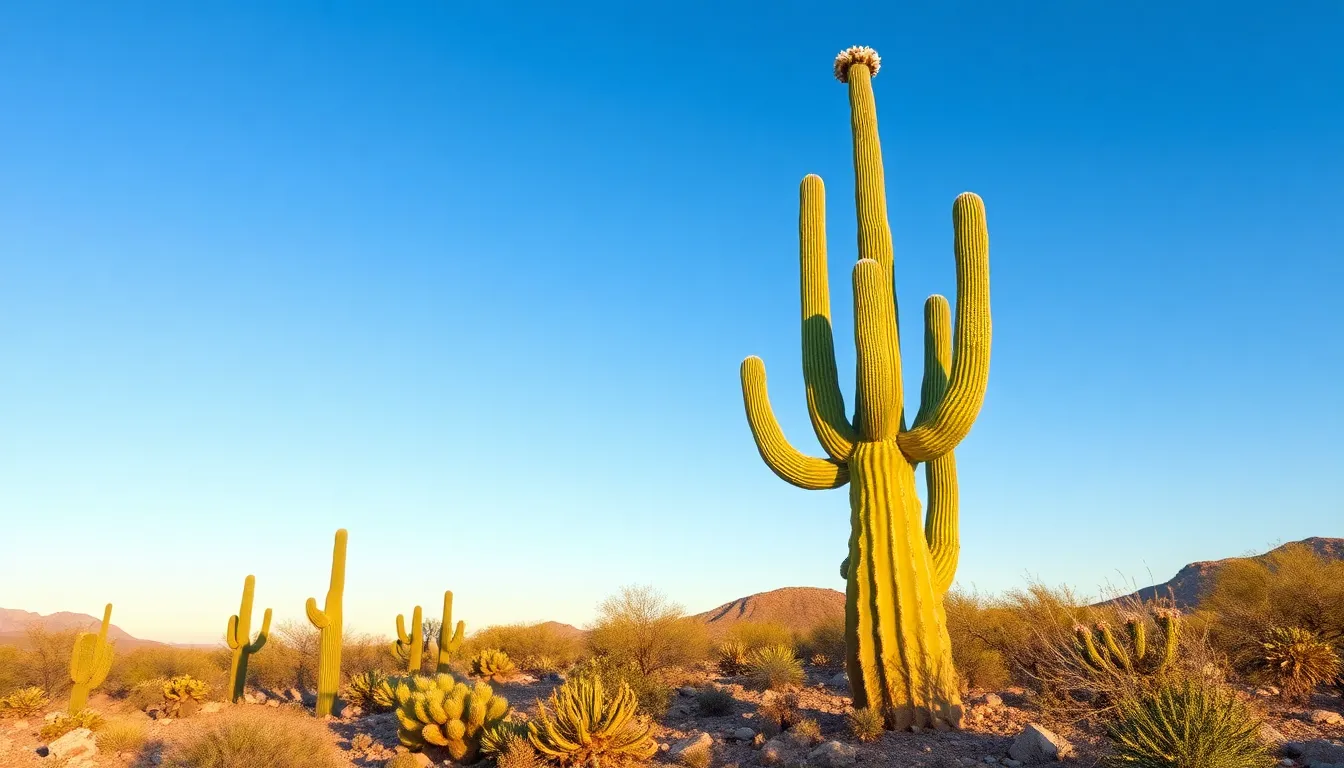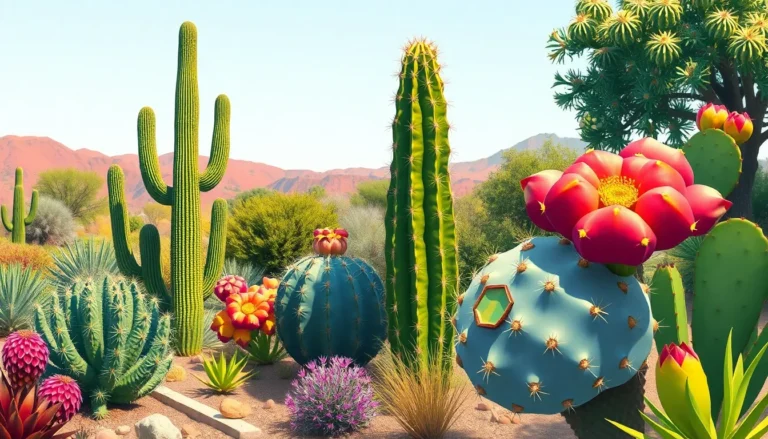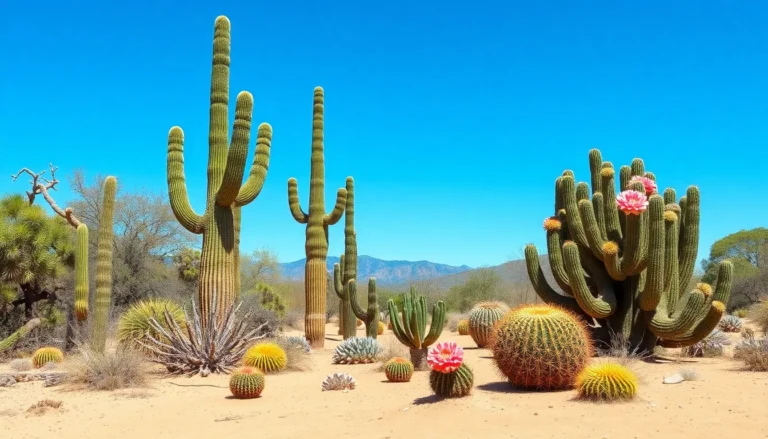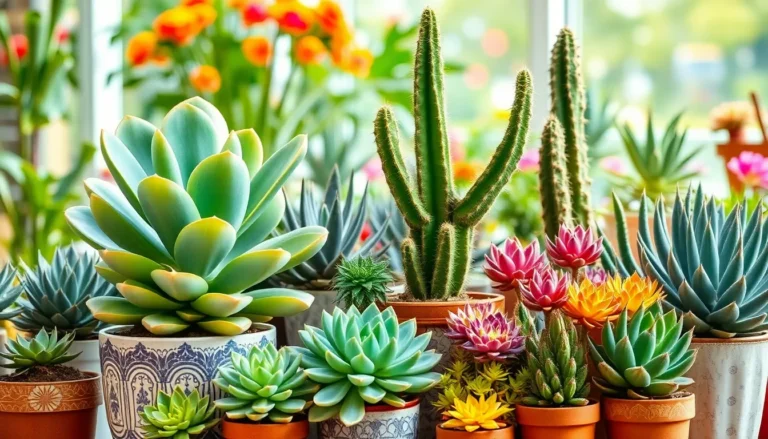Cacti might look like prickly little sentinels guarding the desert, but they’re more than just spiky plants. With their unique shapes and vibrant blooms, these resilient beauties pack a punch when it comes to symbolism. From endurance to warmth, cacti represent a whole world of meanings that can add a dash of depth to any space or conversation.
Whether you’re a plant parent or just someone who appreciates the quirky charm of these desert dwellers, understanding their significance can transform your perspective. Who knew that a plant could embody such strength and resilience? Dive into the fascinating world of cacti meanings and discover how these spiky wonders can inspire and uplift, all while giving your home a touch of the wild.
Cacti Meaning
Cacti carry deep meaning, reflecting their resilience and beauty in various cultures. Significantly, these plants symbolize endurance thriving in harsh environments.
Cultural Significance of Cacti
Cacti hold special places in many cultures, especially in regions like Mexico and the Southwestern United States. In these areas, they symbolize adaptation and perseverance, reflecting the ability to thrive in adversity. The Saguaro cactus is revered, often appearing in artwork and folklore, representing strength and longevity. Various Indigenous peoples consider cacti sacred, using them in traditional ceremonies or for medicinal purposes. These plants connect people to their heritage and environment, reinforcing cultural identity.
Symbolism in Different Regions
Symbolism varies across regions, highlighting diverse interpretations of cacti. In Latin America, the cactus embodies resilience, relating to survival in challenging conditions. Conversely, in Asian cultures, cacti often symbolize protection, believed to ward off negative energy. In Western contexts, they represent exotic beauty and independence, appealing to those seeking unique decor. Each region’s interpretation enriches the overall significance of cacti, illustrating their universal appeal and symbolic power.
Cacti in Literature and Art
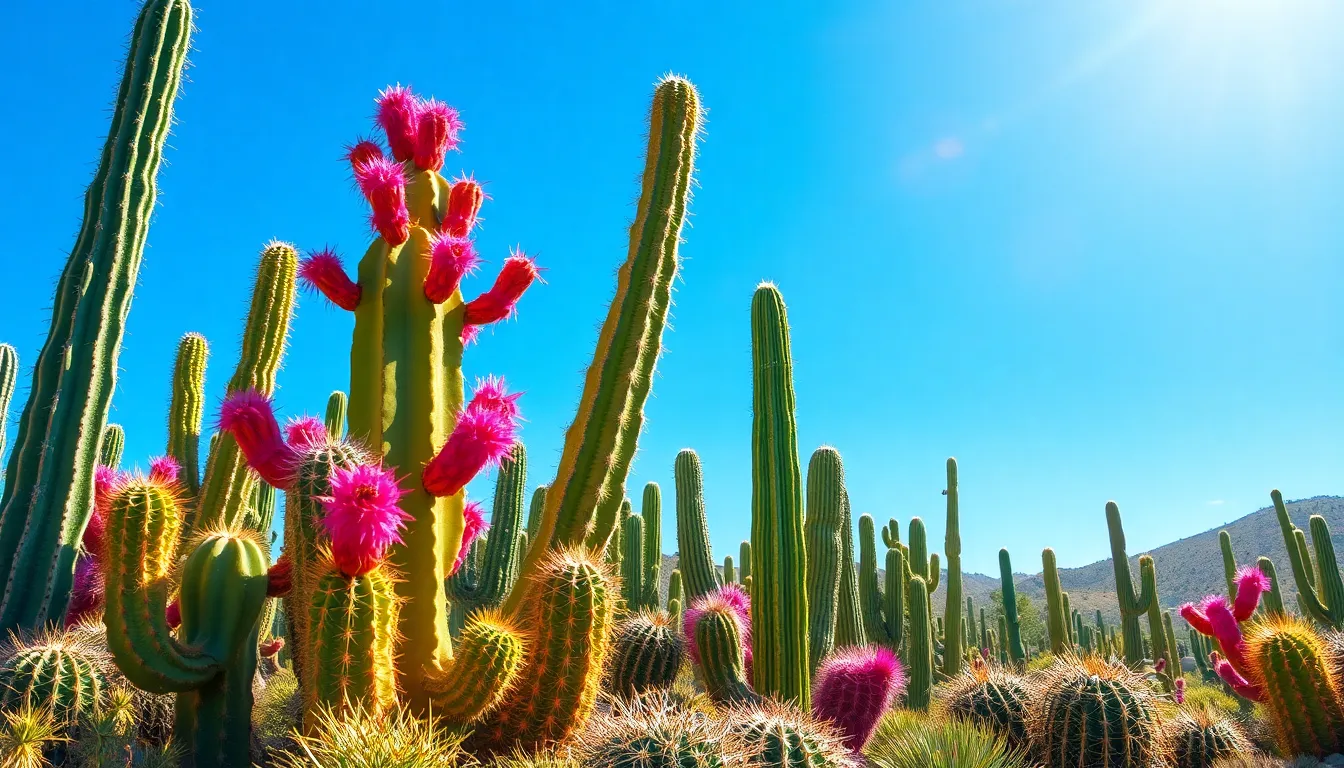
Cacti feature prominently in various forms of literature and art, symbolizing resilience and beauty. Their unique shapes and enduring presence invite inspiration across genres.
Representation in Poetry
Poets often employ cacti as metaphors for strength. In works ranging from modern verses to classic poetry, cacti embody perseverance in challenging environments. Their ability to thrive in adversity resonates with readers. For example, poets like Pablo Neruda have invoked cacti to express themes of isolation and survival. Cacti imagery frequently emphasizes both vulnerability and toughness, showcasing their dual nature. This complexity enriches poetic narratives, inviting deeper exploration of emotional landscapes.
Visual Arts Depictions
Visual arts portray cacti in diverse styles, reflecting their cultural significance. Artists utilize cacti in paintings, sculptures, and photography, highlighting unique forms and textures. Notable works often capture vibrant colors and intricate designs, celebrating cactus beauty. Regional artists in Mexico and the Southwestern United States frequently foreground cacti, connecting them to their heritage. This connection reinforces themes of endurance and adaptation in a visually striking manner. Contemporary artists sometimes incorporate cacti into urban landscapes, symbolizing resilience amid growth and change.
Psychological Implications of Cacti
Cacti hold significant psychological implications, embodying resilience and isolation in various contexts.
Connection to Resilience
Cacti thrive in challenging environments, symbolizing extensive endurance and strength. Various cultures view these plants as representations of the human spirit’s ability to persevere against adversity. For example, the Saguaro cactus, well-known for its towering height, illustrates the capacity to endure harsh desert conditions. Their ability to store water reflects a deeper metaphor for resilience, reminding individuals of the importance of adaptability. Facing life’s challenges, these plants serve as visual reminders to embrace strength and pursue personal growth even in difficult circumstances.
Association with Isolation
Cacti often grow in remote locations, conveying a distinctive sense of isolation. This characteristic resonates with individuals seeking solace or confronting lonely experiences. The sharp spines of cacti symbolize barriers, reminiscent of emotional defenses built to protect oneself from hurt. In literature, the portrayal of cacti highlights themes of solitude, aligning with the complexities of human emotions. Poets and writers use these plants as metaphors, capturing the duality of beauty amid loneliness. Therefore, cacti evoke powerful feelings linked to personal journeys, fostering reflection on isolation’s role in shaping one’s identity.
Cacti in Modern Society
Cacti have found considerable relevance in contemporary life, reflecting their unique characteristics and cultural significance. Various aspects highlight their role today.
Popularity in Home Decor
Cacti enhance home decor through their distinct shapes and low maintenance needs. Homeowners value their ability to brighten up spaces while requiring minimal care. A diverse range of sizes and varieties ensures cacti fit both small apartments and larger homes. Interior designers often incorporate these plants into contemporary designs, creating focal points that attract attention. Growing them in decorative pots introduces a splash of color, complementing modern aesthetics. From minimalist Scandinavian styles to vibrant bohemian themes, cacti adapt well to any design. Their presence brings a touch of nature indoors and adds a vibrant energy to living spaces.
Role in Sustainable Living
Cacti contribute significantly to sustainable living practices. These plants are drought-resistant, making them ideal for water conservation efforts. Many people appreciate that cacti thrive in arid conditions, reducing the environmental impact associated with traditional gardening. Urban gardeners turn to cacti as eco-friendly options, as they require less watering than other plants. Incorporating cacti into landscapes promotes biodiversity while supporting local ecosystems. Additionally, the availability of native cacti species encourages the preservation of local flora. As sustainability becomes a priority, cacti exemplify how one can enjoy aesthetic beauty while being environmentally conscious.
Conclusion
Cacti embody a rich tapestry of meanings that resonate across cultures and contexts. Their resilience and beauty serve as powerful reminders of endurance and adaptability in both nature and life. As symbols of strength they inspire individuals to embrace challenges and grow through adversity.
In home decor they not only enhance aesthetic appeal but also promote sustainable living practices. Cacti’s unique characteristics make them a perfect choice for those looking to add a touch of nature while fostering a connection to deeper values. Whether appreciated for their artistic representation or their cultural significance cacti continue to thrive as a symbol of hope and perseverance.

